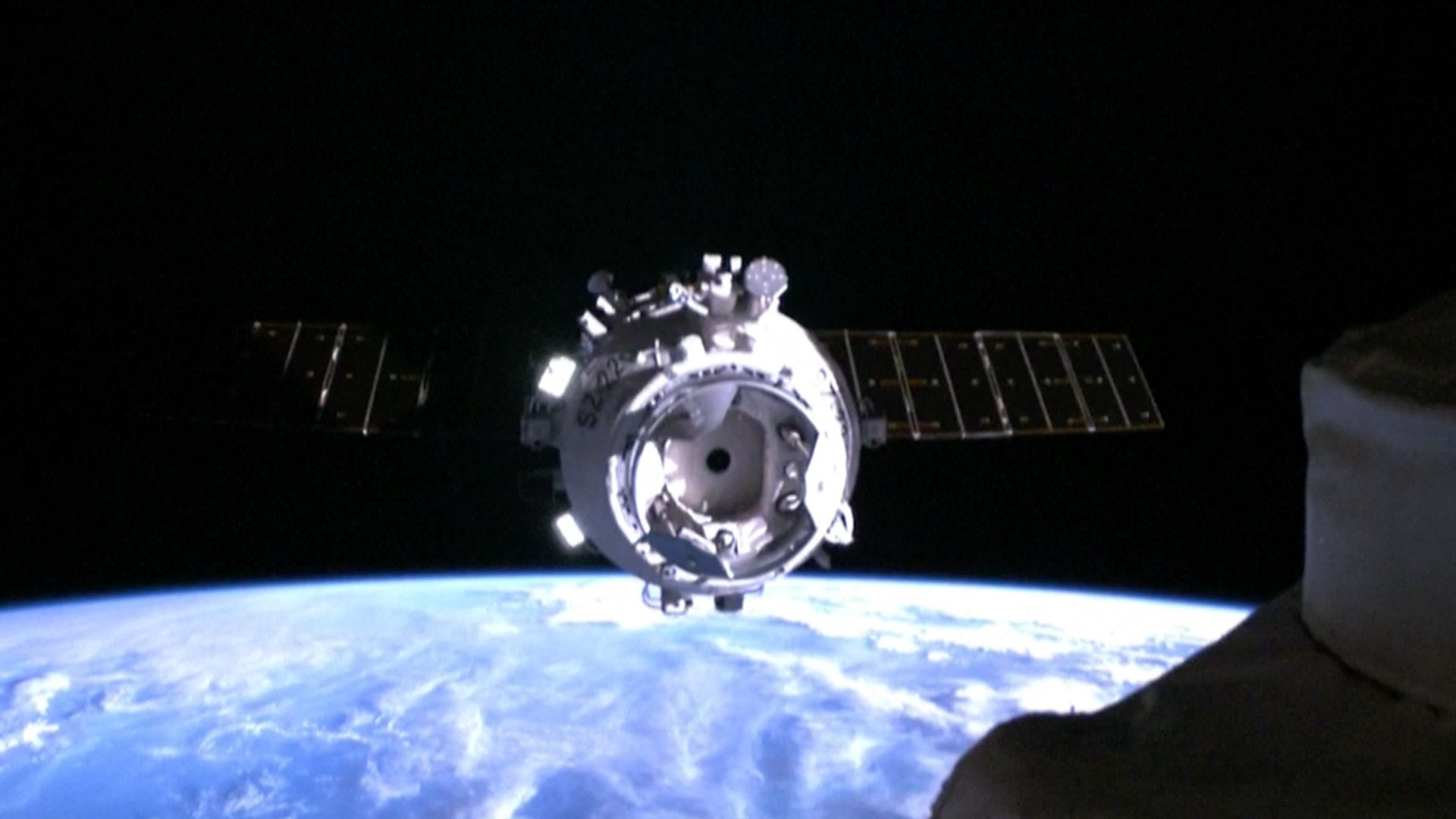Watch China's Shenzhou 22 rescue ship arrive at Tiangong space station (video)
Shenzhou 22 will carry home the three astronauts of the Shenzhou 21 mission, who had been without a lifeboat for 10 days.
Three Chinese astronauts finally have a reliable way to get home from orbit.
The uncrewed Shenzhou 22 spacecraft arrived at Tiangong space station today (Nov. 25) at 2:50 a.m. EST (0750 GMT and 3:50 p.m. Beijing time), about 3.5 hours after launching to orbit atop a Long March 2F/G rocket.
Shenzhou 22 is an unprecedented mission for China — an emergency flight mounted on a short timeline to help out three astronauts who have been "stuck" on Tiangong for the past 10 days.

Those astronauts arrived at the station Oct. 31 for a six-month stay. Their mission, Shenzhou 21, took over from the three-astronaut Shenzhou 20 flight, which was scheduled to come home on Nov. 5.
But things got complicated when Shenzhou 20's departure was delayed after inspections revealed a crack in the window of the crew's return spacecraft. The damage, likely inflicted by a space debris strike, made the Shenzhou 20 vehicle unfit to carry astronauts on the harrowing trip down through Earth's atmosphere, Chinese space officials determined.
So, the Shenzhou 20 trio came home in the newly arrived Shenzhou 21 spacecraft, touching down safely on Nov. 14. That solution solved one problem but created another, leaving the Shenzhou 21 crew without a safe way to get home in the event of an emergency.
China is prepared for such eventualities, however. The nation keeps a backup Long March 2F/G rocket and Shenzhou capsule in a state of near-readiness at the Jiuquan Satellite Launch Center in the Gobi Desert and can fast-track a launch should the need arise.
Breaking space news, the latest updates on rocket launches, skywatching events and more!
China activated this contingency plan in the wake of the Shenzhou 20 debris strike, getting the uncrewed rescue mission off the ground just 20 days later.
Shenzhou 22 provides "a successful example for the international aerospace field in efficiently responding to emergencies," the China Manned Space Agency (CMSA) said in a statement today.
"The success of this mission fully demonstrates the advantages of the new national system, profoundly interprets the concept of 'life first, safety first' in China's manned spaceflight, comprehensively verifies the scientific reliability of the 'one-for-one, rolling backup' strategy for China's space station mission, and practically tests the rapid response and emergency handling capabilities of the entire project," CMSA officials added.
The damaged Shenzhou 20 capsule, meanwhile, is still docked to Tiangong. It "will remain in orbit to conduct relevant experiments," according to the CMSA statement. That space stay will have to end in the next five months or so, however; Shenzhou 20 occupies a docking port that will be needed by the next crewed flight to Tiangong, Shenzhou 23, which is expected to launch in April 2026.

Michael Wall is a Senior Space Writer with Space.com and joined the team in 2010. He primarily covers exoplanets, spaceflight and military space, but has been known to dabble in the space art beat. His book about the search for alien life, "Out There," was published on Nov. 13, 2018. Before becoming a science writer, Michael worked as a herpetologist and wildlife biologist. He has a Ph.D. in evolutionary biology from the University of Sydney, Australia, a bachelor's degree from the University of Arizona, and a graduate certificate in science writing from the University of California, Santa Cruz. To find out what his latest project is, you can follow Michael on Twitter.
You must confirm your public display name before commenting
Please logout and then login again, you will then be prompted to enter your display name.
